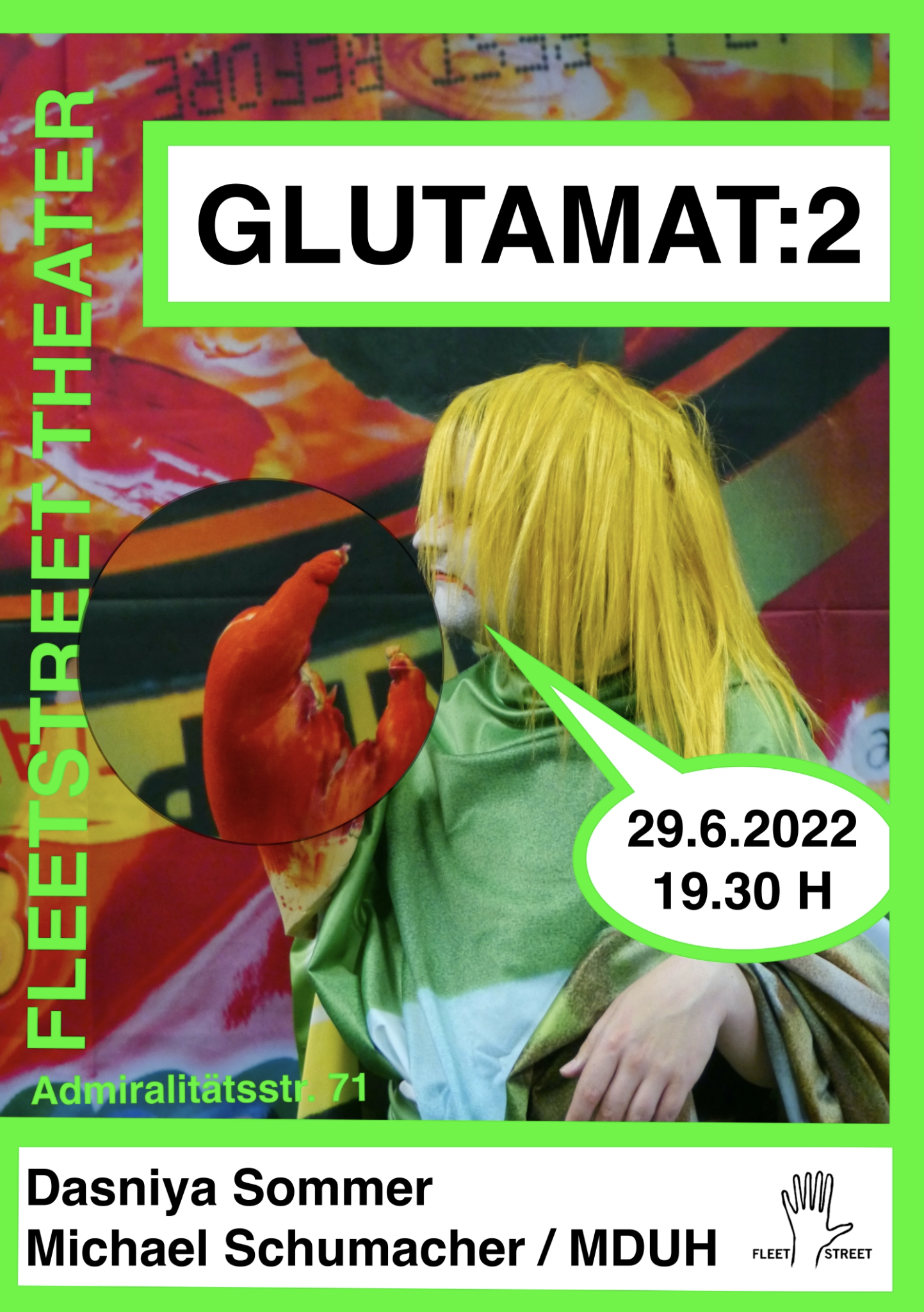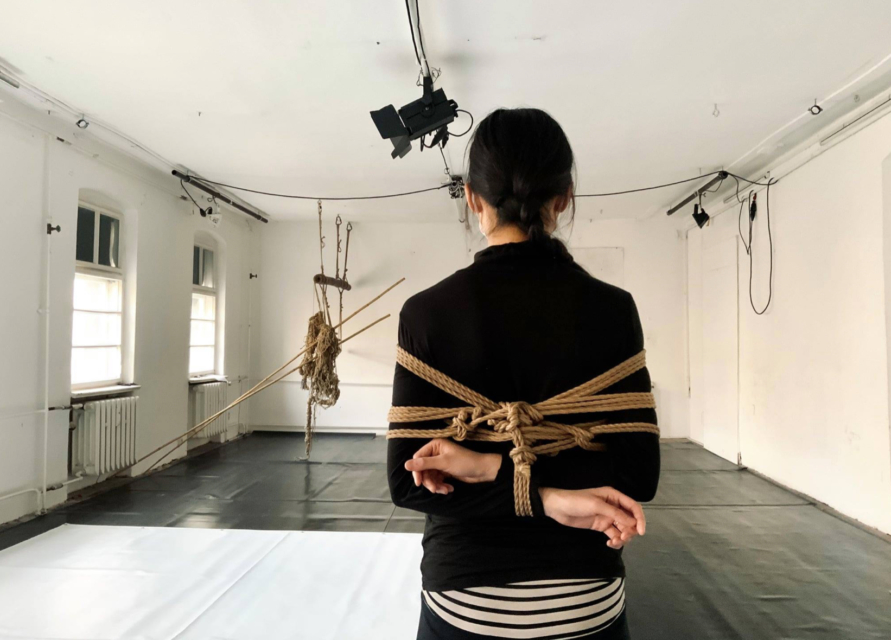
Stills aus dem letzten Instagram-Podcast im Rahmen des Dis-Tanzen-Solo Programms. Ganz herzlichen Dank an den Dachverband Tanz Deutschland e.V. für den Support meiner choreografischen Recherche.
August:
Zwei Tetriskörper auf der Suche nach Schnittstellen zwischen Movement, Shibari-Partnering und Restriktion als Supportmechanismus. Als offene Session angelegt und mit angedeuteten Laban-Tools startend, tunen wir ein. Erst formal, mit self-touching tools und visualisierten Kuben, die uns räumliche Orientierung geben. Dabei nähern wir uns raupenartig und verzwirbeln neugierig unsere Peripherien. Alles läuft tastend ab, auch wenn die Außenperspektive, die Insta-Kamera nicht ganz wegzudenken ist.
Hier und da entstehen Nähemomente. Wir docken an. Skin contact, die Atmung des anderen, eine Mischung aus Deo und kühlem Kippenrauch umgeben unser minimalistisches Partnering. Körper schieben sich durch Korridore abstrakter Umarmungen, wobei das Bewegungsmaterial, unsere couple-Skulptur, zunächst durchweg Shibari geprägt ist. Haben wir beide doch lange als (Bondage-) Modelle gearbeitet und drüber gebrütet, um Details wie Fußstellung, Blick, Torso-Torsionen klassisch zu verinnerlichen. Deeply enscribed into our muscle memory (and not only muscle ;).
Ich versuche diese Habits zu unterbrechen. Schiebe tanzmäßiges ein, gucke in den Raum, raus aus der rituellen Bondageblase, in die Linse, und versuche meine Aufmerksamkeit zwischen Intimitäs-energy, Hingabe ins Seil und performativen Abstand zu balancieren.
Alles in Zeitlupengeschwindigkeit. Emotionale Akzente und Dynamik kommen dazu, wenn wir vertrauter sind. Manchmal blitzen spielerische Powermomente auf, von denen ich mir mehr wünsche.
Am schwierigsten hinzukriegen sind organische Wechsel zwischen Tanz- und Fessel-Timing. Wir versuchen gar nichts zu kaschieren. Für den Moment ist Fesseln Fesseln und moven moven. Gefesselt moven hat nochmal eine andere Zeitlichkeit. Und hier kommt der Partner* auch als Hilfsmittel (Hilfsobjekt-Subjekt) ins Spiel. Ganz technisch:
– Wie räumliche Ebenenwechsel mit verknoteten Gliedern bewerkstelligen?
– Warum überhaupt den Partner* mit wenigen Handgriffen in die Luft schwingen?
– Wann einfach loslassen und sich zum Passiv-Tanzen anbieten?
In den nächsten Sessions bauen wir daraus einen Mix aus lückenhaftem Ineinander und Verabredungen für kleine Soli auf Distanz. Und obwohl unsere Körper schon längst komplex kommunizieren, brauchen wir viele Wiederholungen, wie ja meistens im Tanz. Weil ‘Choreografie schreiben’, also Bewegungen schreiben, eben so dauert. Weil Körper langsam sind, aber über Zeit und mit spielerischen Ansätzen mega cool formbar und aufnahmefähig bleiben.
Dank an Gestalta für die schönen Proben und ans Karada House!
„Gefördert durch die Beauftragte der Bundesregierung für Kultur und Medien im Programm NEUSTART KULTUR, [Hilfsprogramm DIS-TANZEN/ tanz:digital/ DIS-TANZ-START] des Dachverband Tanz Deutschland.“











